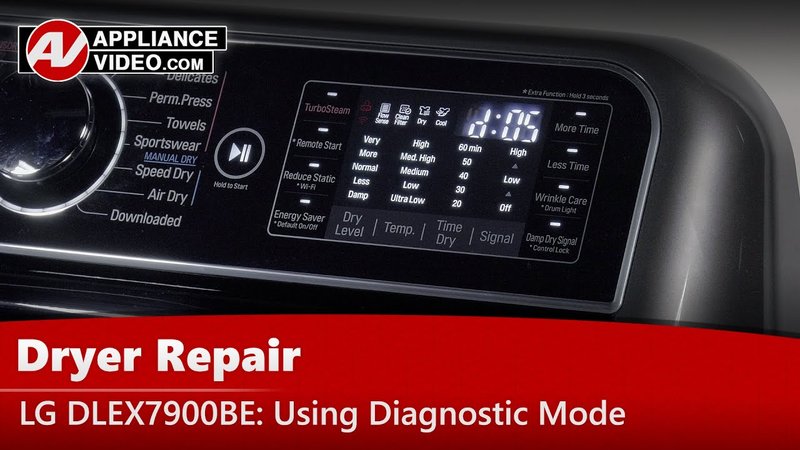
In simple terms, an LG dryer displaying the E1 error is trying to tell you that it’s struggling to perform efficiently due to a possible clog or malfunction. This scenario is akin to trying to breathe through a straw — not very effective, right? The dryer requires adequate airflow to function properly, and when this airflow is restricted, it’s bound to cause trouble. To save yourself from future interruptions, it’s vital to understand the root causes and learn how to maintain your dryer properly.
Understanding the E1 Error Code
You might be wondering, “What exactly is the E1 error code?” Well, here’s the deal: the E1 code typically indicates a drying performance issue related to insufficient airflow or a faulty temperature sensor. Think of it like your car’s check engine light — it’s alerting you that something needs attention. This could mean the exhaust vent is clogged, the lint filter is full, or there could be a sensor issue.
A blocked vent pipe can be like a congested traffic lane, causing delays and reducing efficiency. The lint filter, if not cleaned regularly, can clog and restrict airflow, much like a stuffed-up nose affects breathing. Lastly, a malfunctioning sensor is akin to a faulty thermostat that inaccurately measures and controls temperature. Any of these issues can disrupt the drying cycle and trigger the E1 code.
Once you understand these causes, you’re in a better position to act. By addressing these problems, you not only fix the error but also improve your dryer’s overall efficiency. Let’s dive deeper into how you can prevent the E1 code from making a repeat appearance.
Regular Maintenance of Your Dryer
Preventing the E1 error in the future involves a regular and consistent maintenance routine. This means taking simple, proactive steps to care for your dryer, like checking the exhaust vent for clogs and cleaning the lint filter after every load. Imagine your dryer as a runner — it needs clear airways to perform at its best.
Start by inspecting and cleaning the exhaust vent routinely. Lint and debris can accumulate over time, creating a barrier to airflow. Removing these obstacles is like clearing the path for a breeze, allowing the dryer to “breathe” properly and function effectively. Additionally, ensure you don’t overload the dryer, as this can strain the machine and reduce its efficiency, leading to more frequent errors.
Another smart step is checking the temperature sensor. If the sensor fails, it’s like having a broken thermostat at home — things get out of balance quickly. If you’re unsure about checking sensors, consulting an appliance professional can be a wise move. They can ensure everything is calibrated and functioning correctly, giving you peace of mind.
Improving Laundry Room Conditions
Did you know that the environment of your laundry room can also impact your dryer’s performance? If the room is too humid or poorly ventilated, your dryer may struggle to work efficiently. Ensuring proper ventilation in your laundry space is crucial. It’s like making sure a room has enough fresh air, so everyone inside can breathe comfortably.
Consider adding a dehumidifier if your laundry room is prone to excessive moisture. This helps maintain a drier environment, reducing the strain on your dryer and preventing potential malfunctions. Proper ventilation and airflow within the room can prevent the build-up of heat and moisture, factors that can contribute to the E1 error code over time.
Remember, the key is balance. Keeping both your dryer and its surroundings in top shape creates an optimal setup, ensuring smooth and trouble-free operation. By maintaining these conditions, you not only prevent the E1 error but also extend the life of your appliance.
Final Thoughts and Preventive Measures
To sum it up, preventing the LG dryer E1 error is all about ensuring smooth airflow and regular maintenance. It’s like keeping your car tuned up and ready to go, reducing the chances of hiccups along the road. Take the time to clean, inspect, and maintain your dryer regularly. This proactive approach will keep your laundry routine smooth and uninterrupted.
Think of your dryer as a trusty kitchen appliance — when it’s well-maintained, it serves you efficiently and reliably. However, neglecting it can lead to unnecessary headaches. By taking a little time to care for your dryer, you’re investing in its longevity and performance.
So, the next time you do laundry, give your dryer some love and attention. Clean that lint filter, check the vents, and keep an eye on sensor functionality. Your dryer will thank you by running smoothly and efficiently, load after load. And who knows, with these steps, you might never have to see that pesky E1 error code again!